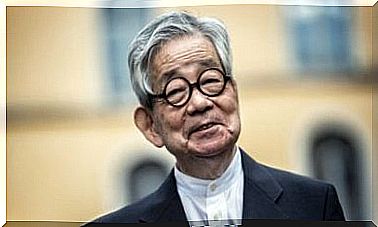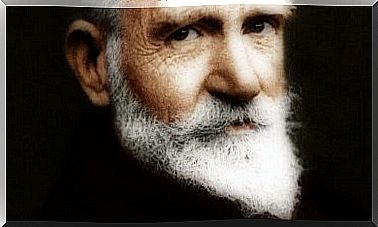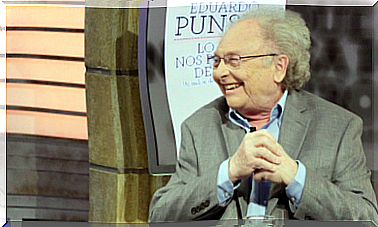Know The Technique Of Paradoxical Intention

The tools psychologists work with are called psychological techniques. These techniques are only used by experts in the field of mental health. An example of them is the technique of paradoxical intention.
These techniques are typically used in the context of a psychological intervention/treatment. Furthermore, psychological treatments may belong to different psychological schools (cognitive-behavioral, systemic, gestalt, psychoanalysis, etc.)
In this sense, psychological treatment is a professional intervention. This intervention is based on psychological techniques used in a clinical context (mental health center, hospital, private practice, associations of affected people, etc.). In it, a specialist, usually a clinical psychologist, seeks to eliminate the person’s suffering with the patient’s active collaboration.

Some examples might be: helping a person to overcome their depression, working with a family with conflicts among its members so that they can communicate better, or teaching a teenager to interact with peers in a less aggressive way.
In applying the paradoxical intention technique, patients are asked to stop the tendency to try to escape or control their symptoms. Also, they are asked to deliberately make them appear and exaggerate them.
A psychological treatment involves, among other things, listening carefully to what the patient has to say and looking for personal, social, family, etc. aspects that generate or maintain the problem that motivated the consultation. It also involves informing the patient about how to solve the problems posed using specific psychological techniques. Examples of these techniques are training in breathing or relaxation, paradoxical intent, solving interpersonal problems, challenging erroneous beliefs, training in social skills, and so on.
In summary, psychological treatments are applied by psychologists who are experts in behavioral problems. Psychologists use specialized techniques of assessment (an interview, a medical history, tests and questionnaires, etc.), and treatment, the effectiveness of which has been proven in several scientific investigations.
The technique of paradoxical intention
The use of paradoxical intention is linked to humanistic-oriented psychotherapy, specifically Victor Frankl’s (1999) logotherapy. On the other hand, the force with which the cognitive approach emerged created an ideal field for its use.
Thus, within cognitive-behavioral therapy, paradoxical intent has become an especially useful cognitive intervention to overcome the resistance to change that some patients exhibit.
To understand it, let us think that a paradox can be defined as something opposite to what is considered correct. A paradox, from the Latin paradoxus (which, in turn, has its origin in the Greek language), is a figure of rhetoric that consists in the use of expressions that involve a contradiction.
This means that, in addition to contradictory conditions, the factors presented are valid, real or reliable. The paradoxical intention technique tries to confront the common sense of the person to whom it is applied.
Thus, using paradoxical intent in therapy, the patient would be encouraged to do or desire what he fears (Frankl, 1984). Do you think it’s risky or do you find it a useful technique?

The General Purpose of the Paradoxical Intent
The general purpose of paradoxical intent is to bring about changes in people’s attitudes and reactions in situations of stress or discomfort. It is about breaking the vicious circle that is usually generated, precisely guiding the points most feared by the patient. For a better understanding, let’s see an example:
A patient with insomnia puts all his effort every night into getting to sleep. With paradoxical intent, the practitioner asks the patient to do the exact opposite of what he is trying to do. Now he has to lie down, but trying to stay awake as long as possible. This way of acting allows him to put aside the effort to sleep, since the indication is to stay awake and, thus, he will sleep more quickly.
Why does the paradoxical intention technique work?
Despite its recognized effectiveness in the clinical setting, its mechanisms of action are not clearly established (unlike what happens with other psychological techniques). Thus, there are several models that try to explain its effects.
For certain variants of the technique, they stimulate control mechanisms that would affect the behavioral chain. In other cases, there is an appeal to changes in expectations, self-efficacy or attribution of control as mechanisms responsible for the change. Among the theoretical models proposed to explain the intervention of the mentioned mechanisms are:
- The double bind theory (Watzlawick, Beavin and Jackson, 1981)
- The theory of the decontextualization of the symptom (Omer, 1981)
- The theory of recurrent anxiety (Ascher and Schotte, 1999)
- The ironic mind control theory (Wegner, 1994)

How is the paradoxical intention technique applied?
The procedure will require two changes from the patient’s current way of dealing with the problem. On the one hand, the patient renounces attempts to control the problem. On the other hand, he must be willing to show and increase symptoms.
Both requirements go against the therapeutic logic to which the patient is accustomed. It will be necessary to explain in detail and convincingly to the patient how the problem dynamics can benefit from these changes.
Sequence of application of the paradoxical intention technique
- Problem assessment and identification of the logic that keeps the person in ineffective solutions.
- Reset the symptom based on the data from the previous phase. Provide a new meaning of the symptom (eg benefits).
- Indicate the paradoxical changes according to the pattern of the patient’s complaint.
- Conceptualize changes based on paradoxical intervention (establish the explanatory mechanism).
- Relapse prevention.
- Completion and patient follow-up.
Is the paradoxical intention technique effective?
Despite its benefits, paradoxical intent is perhaps one of the most difficult procedures to use in cognitive-behavioral therapy. In addition to knowing the logic and procedure, the therapist must have enough experience to detect when the time is right to apply it.
In this case, the communication skills and clinical experience of the therapist will be decisive for the success of the application. The therapist’s firmness, security, conviction and capacity for simulation can be fundamental elements for the patient to be able to do what contradicts what his intuition suggests.
It is worth emphasizing that paradoxical intent, as a technique, has given good results in different fields of application. However, it may have been more successful in curing insomnia. Finally, it is worth emphasizing the importance of its application under the supervision of a therapist, because if it is poorly applied, it can increase the problem and even make it more resistant to future interventions.









